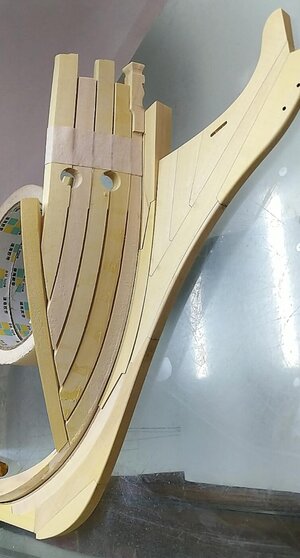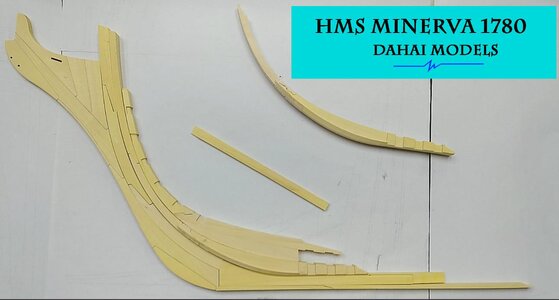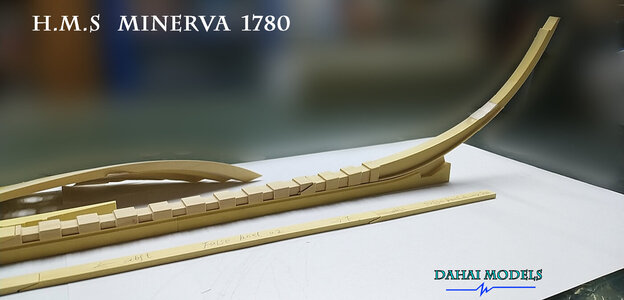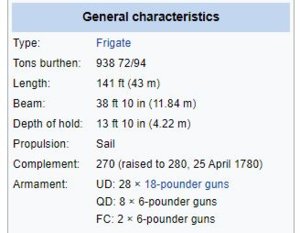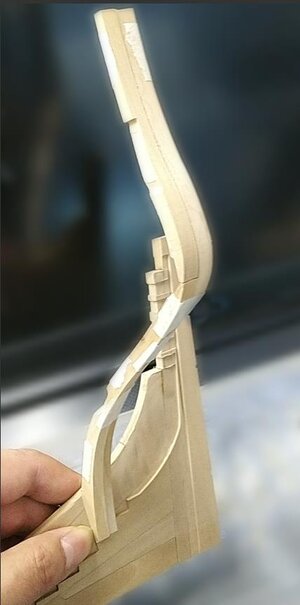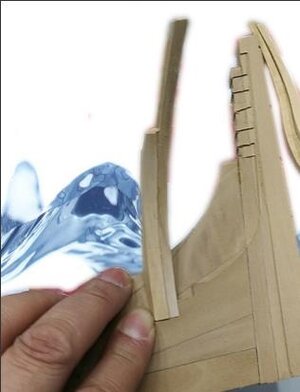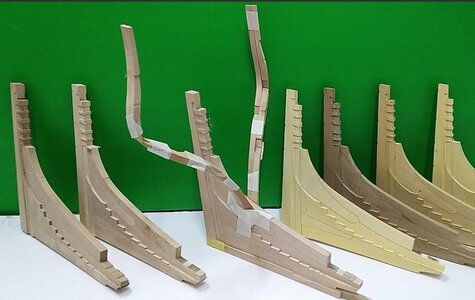I love the colour of the Yellow Tang wood from China.
-

Win a Free Custom Engraved Brass Coin!!!
As a way to introduce our brass coins to the community, we will raffle off a free coin during the month of August. Follow link ABOVE for instructions for entering.
You are using an out of date browser. It may not display this or other websites correctly.
You should upgrade or use an alternative browser.
You should upgrade or use an alternative browser.
Dahai Model - New Design Hms Minerva 1780 POF Stern section
- Thread starter DaHaimodel
- Start date
- Watchers 47
- Joined
- Apr 15, 2020
- Messages
- 448
- Points
- 278

Based on the images supplied, this kit will make a brand new standard for quality and precision. I am a bit worried about the modeler: what else he\she will be during other than just assemble? The parts are fit so well! You must shape them for the images to look perfect 
- Joined
- Apr 15, 2020
- Messages
- 448
- Points
- 278

This is strange about the text problem. Can you try to post a message in another forum? We have a test section u can try. Maybe also you can try to send a PM to me or Zoltan and see if that works.
Also, you can try to log off of SOS. Close the web browser and open it up again and log on again and see if that helps.
- Joined
- Apr 15, 2020
- Messages
- 448
- Points
- 278

Yes, log off and re-login, this problem is solved.Thank you!This is strange about the text problem. Can you try to post a message in another forum? We have a test section u can try. Maybe also you can try to send a PM to me or Zoltan and see if that works.
Hallo @DaHaimodelHi everyone!
I'm DaHaimodel,In fact, DahaiModel is a team of 3D designers, ModelBuilder and ship model experts from Europe and China. Dahaimodel is committed to developing original and legitimate kit projects, cooperating with SOS forum to promote these projects, and sharing the fun of model development and model build with all enthusiasts (members).
First of all, I would like to thank SOS forum for providing such a good platform. I would also like to thank zoly99sask, Uwek, Jimsky and Donnie for their great support and help in this project, they providing a lot of historical research materials and modification opinions. Many thanks to them!
The first time I saw a picture of the HMS Minerva 1780 model was in the magazine Model ShipWright. I was attracted by her beautiful stern carvings. Later, I learned that the model from US Naval Academy Museum is the reference prototype of this model.
View attachment 221235
Model ShipWright magazine and HMS Minerva 1780 model made by Malcolm Darch.
(Note: the copyright belongs to the original author, we did not refer to this model to develop kit,We developed the kit with full reference to the original drawings and model photos of NMM. We purchased the license of NMM)
View attachment 221236
The original draught of NMM collection,
View attachment 221237
View attachment 221238
The model of HMS Minerva 1780 collected by NMM.
Uwek has done a lot of research on Minerva's history and collected a lot of information. Here is the history of Minerva he collected.Many thanks to him!
The Minerva-class sailing frigates were a series of four ships built to a 1778 design by Sir Edward Hunt, which served in the Royal Navy during the latter decades of the eighteenth century.
During the early stages of the American Revolutionary War, the Royal Navy - while well supplied with ships from earlier programs, but faced with coastal operations and trade protection tasks along the American littoral - ordered numerous forty-four gun, two-decked ships and thirty-two gun 12-pounder armed frigates. Anticipating the entry of European powers into the war, and with renewed resistance provided by the large, nine hundred ton, thirty-two gun 12-pounder armed frigates of the French Navy, the RN looked to a newer larger design of frigate to meet this challenge. From November 1778 larger frigates with a heavier 18-pounder primary armament were ordered.
They were the first Royal Navy frigates designed to be armed with the eighteen-pounder cannon on their upper deck, the main gun deck of a frigate. Before coming into service, their designed secondary armament was augmented, with 9-pounder guns being substituted for the 6-pounder guns originally planned, and with ten 18-pounder carronades being added (six on the quarter deck and four on the forecastle). The type eventually proved successful, and went on to be virtually the standard frigate type during the latter periods of the age of sail.
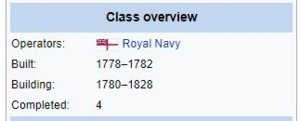

taken from Threedecks-page

Ships in class
- HMS Minerva
- Builder: Woolwich Dockyard
- Ordered: 6 November 1778
- Laid down: November 1778
- Launched: 3 June 1780
- Completed: 6 July 1780
- Fate: Fitted as a troopship and renamed Pallas 29 May 1798; broken up March 1803 at Chatham Dockyard.
- HMS Arethusa
- Builder: James Martin Hilhouse, Bristol
- Ordered: 26 January 1779
- Laid down: 23 August 1779
- Launched: 10 April 1781
- Fate: Broken up May 1815 at Sheerness Dockyard.
- HMS Phaeton
- Builder: John Smallshaw, Liverpool.
- Ordered: 3 March 1780
- Laid down: June 1780
- Launched: 12 June 1782
- Completed: 27 December 1782 at Plymouth Dockyard.
- Fate: Sold to break up 26 March 1828
- HMS Thetis
- Builder: John Randall, Rotherhithe.
- Ordered: 22 September 1781
- Laid down: December 1781
- Launched: 23 September 1782
- Completed: 15 November 1782 at Deptford Dockyard.
- Fate: Sold 9 June 1814 at Chatham Dockyard.
in the following days I will show much more details of the different ships and also the available contemporary drawings and models representing the very interesting class
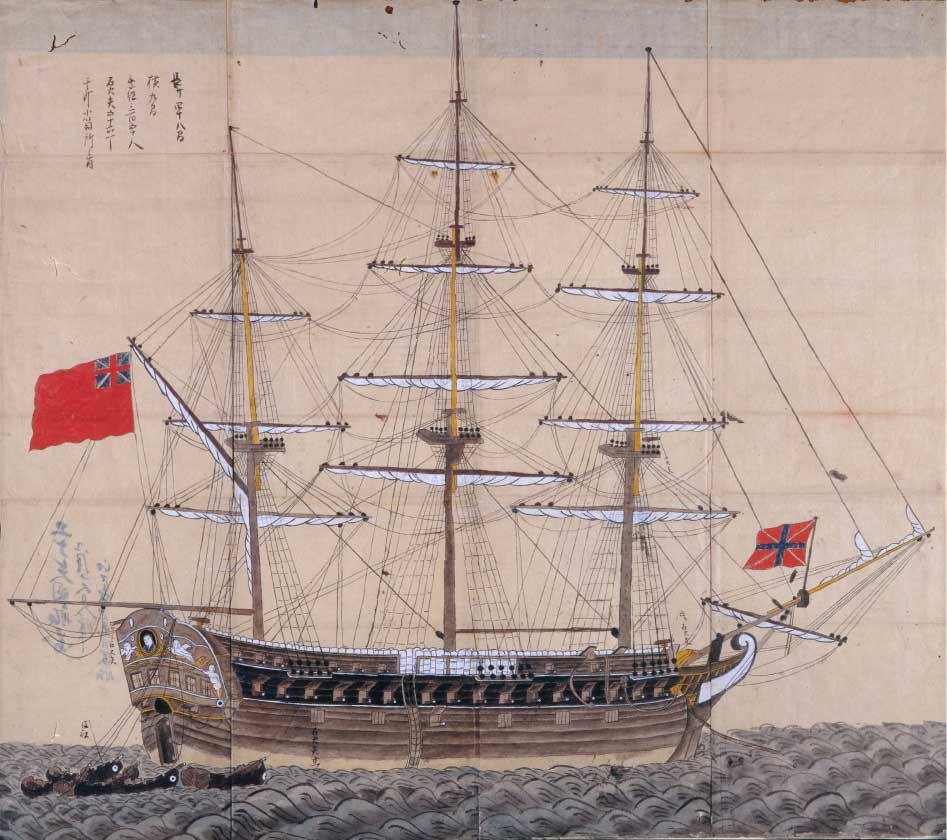
Minerva-class frigate - Wikipedia

en.wikipedia.org
British Fifth Rate frigate 'Minerva' (1780)
British Fifth Rate frigate 'Minerva' (1780). Dates of service, name changes, previous and next incarnations, dimensions, armament, commanders, officers and crewmen, actions, battles, sources
threedecks.org
we wish you all the BEST and a HAPPY BIRTHDAY

Happy birthday!!
Happy Birthday, DaHaiModel!! 

from me too. god bless stay safe all don
- Joined
- Apr 15, 2020
- Messages
- 448
- Points
- 278

Thank you everyone,thank you!
Indeed, my development is really slow...I'm improving and optimizing many details. Suggestions come from some model builders. For example, I reserved some at tenon positions of transoms, and I reserved about 1.5 mm.And rabbet, I reserved 0.5 mm on the upper edge of keel,
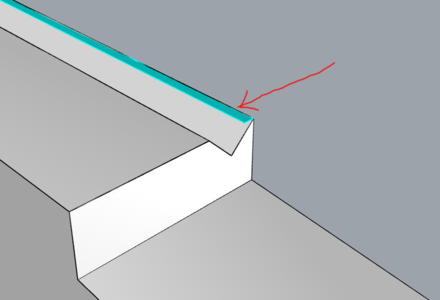
When I was processing the aft cant frame, I optimized the steps on deadwood , so I delayed the processing until today.
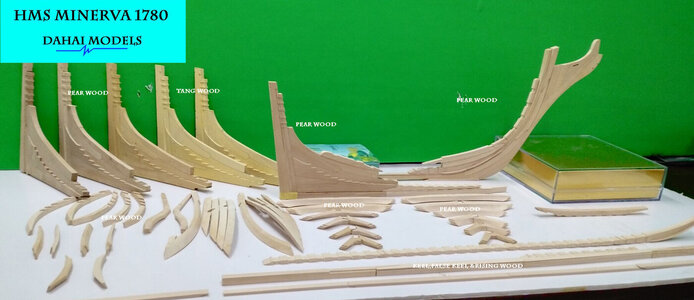
This is a set of chapter 1 sample of peer wood, another complete set of samples of Tang wood,the figure above shows two stern structures of this material, one of which was optimized this time, this β Version was customized by a member of SOS forum, because I need to design a frame jig for him, but I need to process a set of sample frames and test the jig first,so it took a few more weeks...say sorry to him. I estimate that I can process the samples of the frame this month.
However, compared with the complex processing in Chapter 1, Chapter 2 (all frames) will be easier to process. Maybe you can see the sample in these two days.
Thank you!
DaHai
Indeed, my development is really slow...I'm improving and optimizing many details. Suggestions come from some model builders. For example, I reserved some at tenon positions of transoms, and I reserved about 1.5 mm.And rabbet, I reserved 0.5 mm on the upper edge of keel,

When I was processing the aft cant frame, I optimized the steps on deadwood , so I delayed the processing until today.

This is a set of chapter 1 sample of peer wood, another complete set of samples of Tang wood,the figure above shows two stern structures of this material, one of which was optimized this time, this β Version was customized by a member of SOS forum, because I need to design a frame jig for him, but I need to process a set of sample frames and test the jig first,so it took a few more weeks...say sorry to him. I estimate that I can process the samples of the frame this month.
However, compared with the complex processing in Chapter 1, Chapter 2 (all frames) will be easier to process. Maybe you can see the sample in these two days.
Thank you!
DaHai
Happy Birthday!
Regards, Thomas
Regards, Thomas
FROM ME TOO AND MANY, MANY MORE THIS IS A MUST BUILD FOR ME, ANY IDEA OF A RELEASE DATE. GOD BLESS STAY SAFE YOU AND YOURS DON
Unfortunately, Don, the projected kit is still in the design stage. Once the design is completed, all of us will have the advantage to see the 'Pilot Model' built by our member here, on SOS.THIS IS A MUST BUILD FOR ME, ANY IDEA OF A RELEASE DATE.
- Joined
- Apr 15, 2020
- Messages
- 448
- Points
- 278

The funny things are starting - work which can bring fun or completely different feelings
We can really see, that you try fully to develop the best for the modeler - all that work
One hint: For such work like puting temporary two or more wooden parts together I am using often double sided adhesive tape - this keeps the view free to the wooden elements, you can make small adjustments of angles etc without loosing the contact between the elements and you can make marks with pencil onto the wood. With tape like you are using all this is not so easy - Maybe you give it a try.....
We can really see, that you try fully to develop the best for the modeler - all that work
One hint: For such work like puting temporary two or more wooden parts together I am using often double sided adhesive tape - this keeps the view free to the wooden elements, you can make small adjustments of angles etc without loosing the contact between the elements and you can make marks with pencil onto the wood. With tape like you are using all this is not so easy - Maybe you give it a try.....



